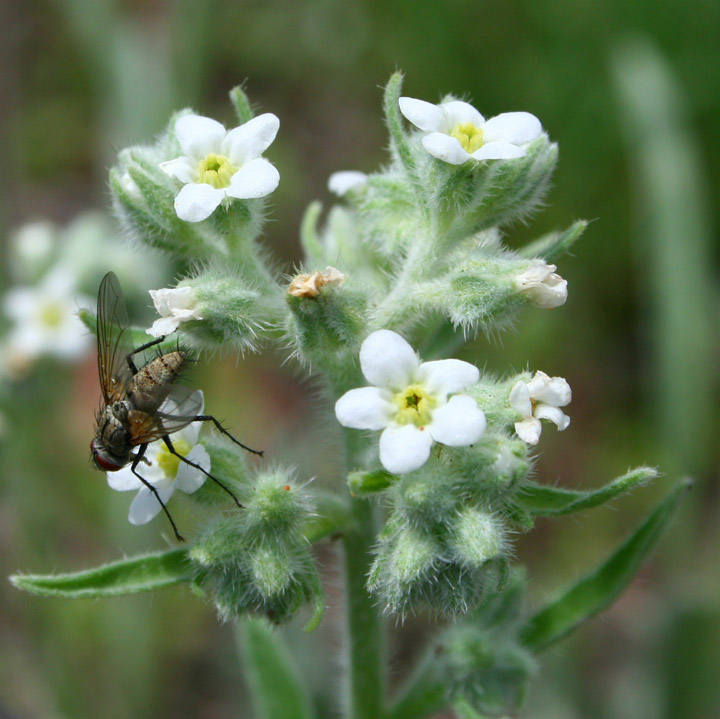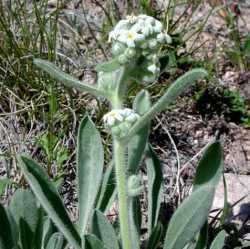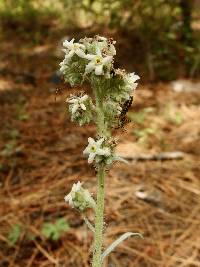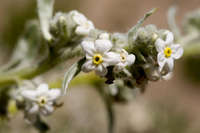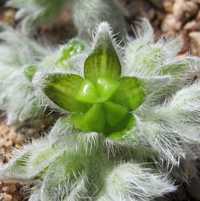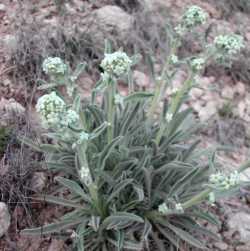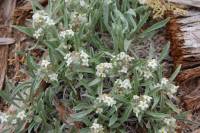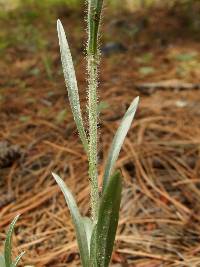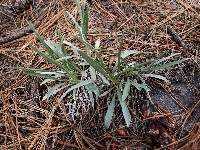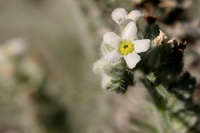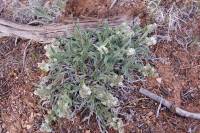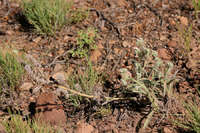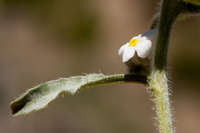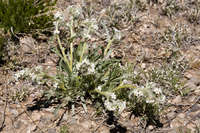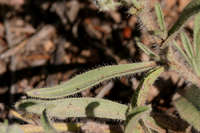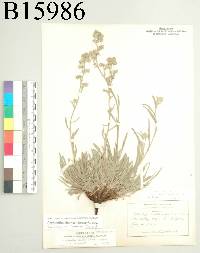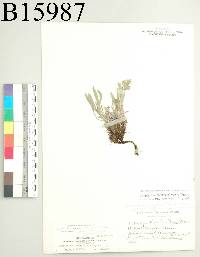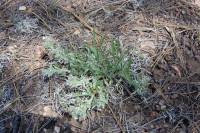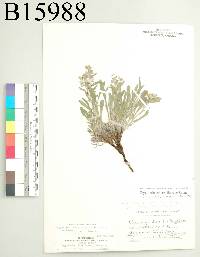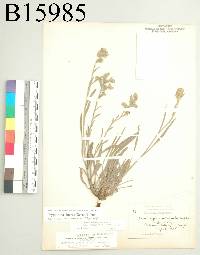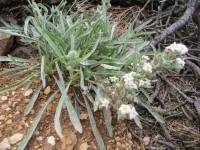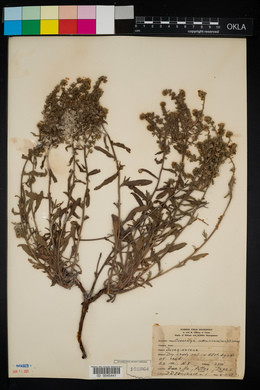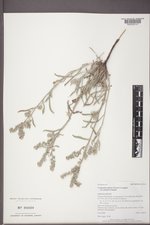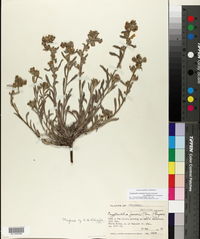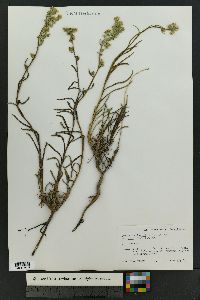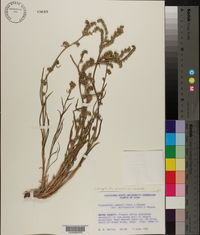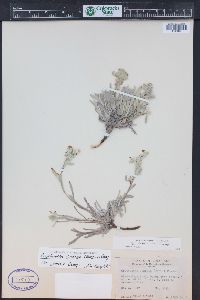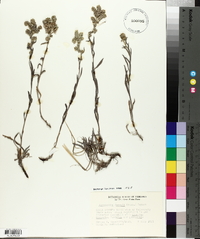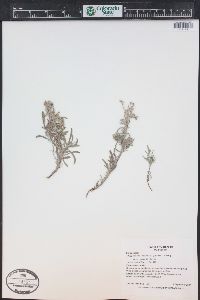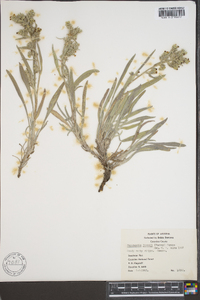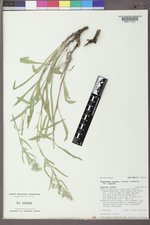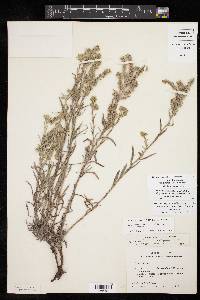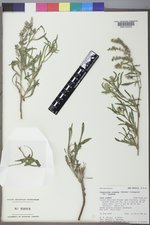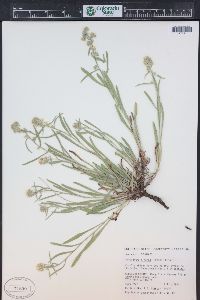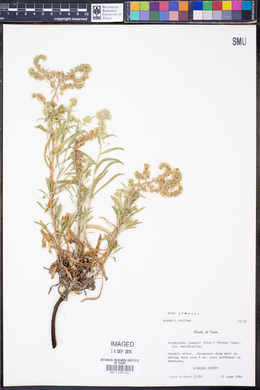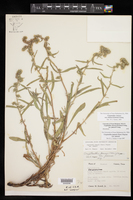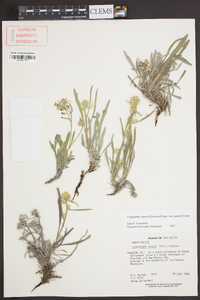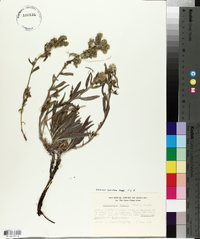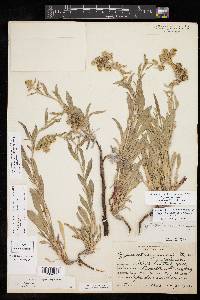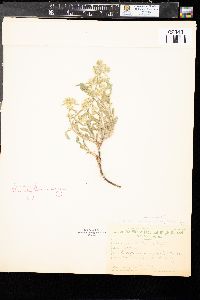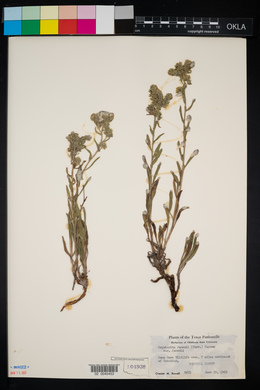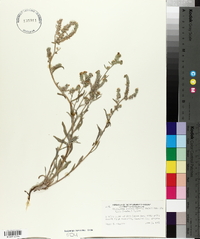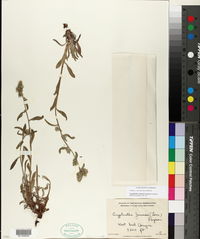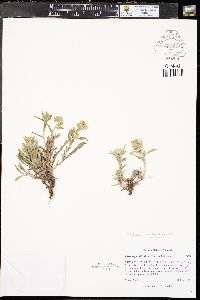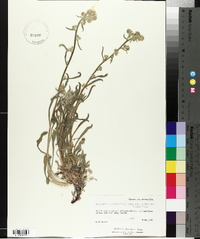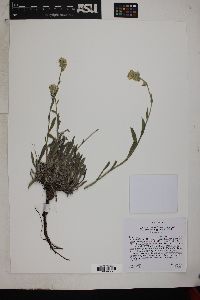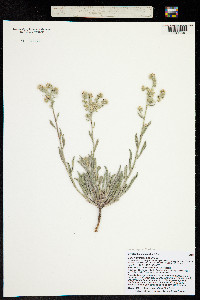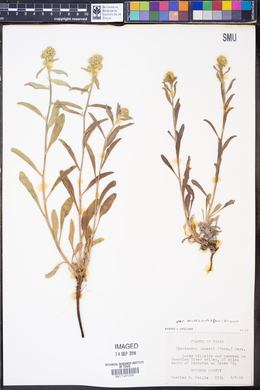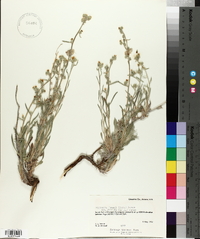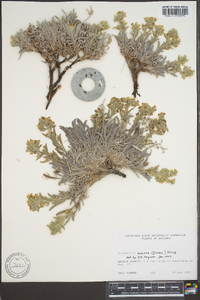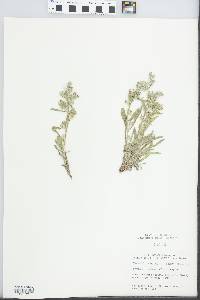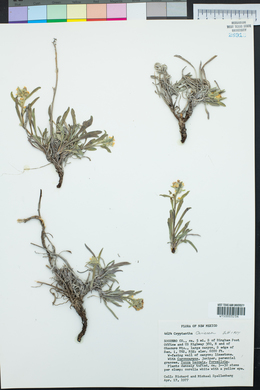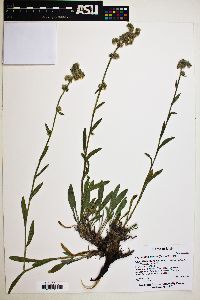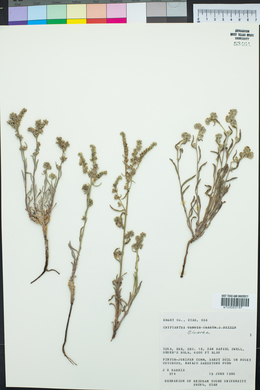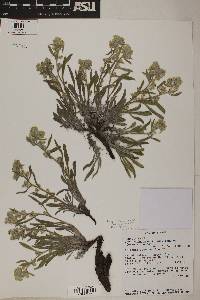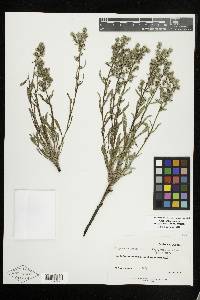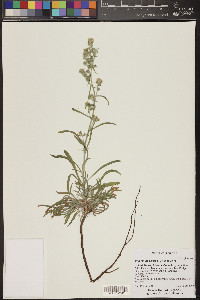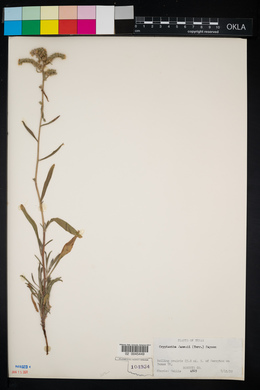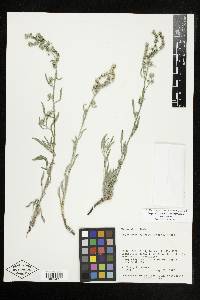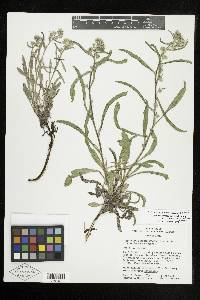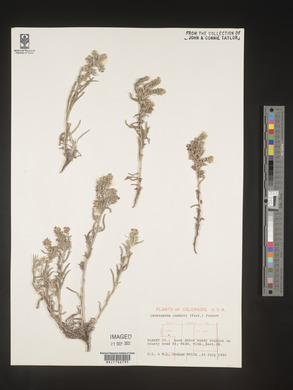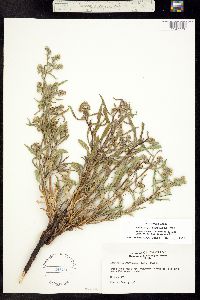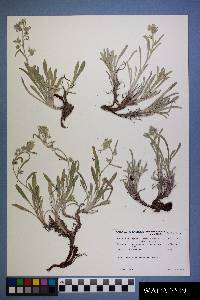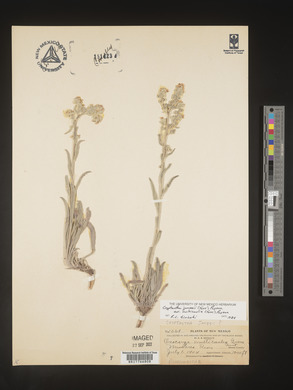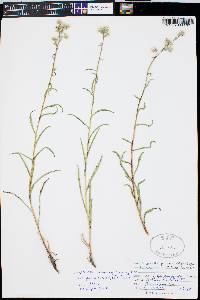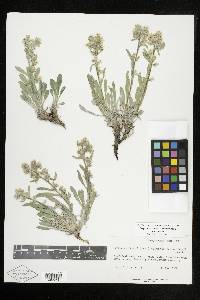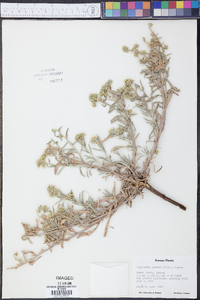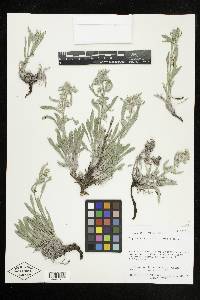
|
|
|
|
Family: Boraginaceae
James' cryptantha, more...James' cryptantha, James' cryptantha, James' Perennial Cat's-Eye, bownut cryptantha, James catseye, James' catseye, James' cryptantha
[Cryptantha cinerea (Greene) Cronq., moreCryptantha cinerea cinerea , Cryptantha cinerea var. cinerea , Cryptantha cinerea var. jamesii Cronq., Cryptantha jamesi (Torr.) Payson, Cryptantha jamesii (Torr.) Payson, Cryptantha jamesii var. abortiva (Greene) Payson, Cryptantha jamesii var. cinerea (Greene) Payson, Cryptantha jamesii var. disticha (Eastw.) Payson, Cryptantha jamesii var. jamesii , Cryptantha jamesii var. laxa (J.F. Macbr.) Payson, Cryptantha jamesii var. multicaulis (Torr.) Payson, Cryptantha jamesii var. setosa (M.E. Jones) I.M. Johnston ex Tidestrom, Cryptantha jamesii var. typica Payson, Cryptantha suffruticosa Piper, Krynitzkia jamesii A.Gray, Myosotis suffruticosa , Oreocarya suffruticosa var. cinerea (Greene) Payson] |
Jepson 1993, Kearney and Peebles 1969, Sivinski 1998, Welsh et al 2003 Duration: Perennial Nativity: Native Lifeform: Subshrub General: Perennial herbs, to 20 cm tall, from a woody caudex, this sometimes branched; stems prostrate to ascending, branching from the base as well as above; herbage silvery-white in appearance, covered with long hairs and stiff white bristles, these bulbous at the base (pustulate). Leaves: Clustered in a persistent basal rosette and alternate along the stems, sessile; blades linear to oblanceolate, 1-9 cm long, upper surfaces strigose, lower surfaces strigose and bristly. Flowers: White and yellow, in scorpioid cymes that become elongate in fruit; calyx 5 parted, the lobes ovate-lanceolate, 3-4 mm long in flower, 5-6 mm long in fruit; corollas salverform, white with a yellow throat, the tubes ringed with short antrorse scales at the base of the interior. Fruits: Nutlets 1-4 per calyx, smooth and shiny, 2 mm long, curved inward, not compressed. Ecology: Found on dry, sandy or gravelly soils in open, grassy woodlands, often among pi-on-juniper and oak, from 4,500-8,500 ft (1372-2591 m); flowers April-September. Distribution: MT to CA, east to TX. Notes: Cryptantha is a genus of bristly herbs with white or yellow flowers in spikes that are usually 1-sided and curling like a scorpion-s tail (-scorpioid-). C. cinerea is a common perennial Cryptantha, fairly widespread in the West. Look for basal clusters of bristly lanceolate leaves with a few flowering stalks emerging from within; each stalk with several scorpioid cymes of white flowers with yellow centers. The seeds (nutlets) are smooth and shiny. There are a number of varieties, some of which have at times been treated as separate species. Ethnobotany: The plant was given to newborn infants for prenatal snake or toad infection; a poultice of the plant was applied to snakebites and sores; also used ceremonially as a life medicine. Etymology: Cryptantha comes from the Greek krypto, "hidden," and anthos, "flower," a reference to the first described species in the genus which has inconspicuous flowers that self-fertilize without opening; cinera means ashy-gray, referring to the foliage. Synonyms: None Editor: LCrumbacher 2011, AHazelton 2015 Jepson 1993, Kearney and Peebles 1969 Duration: Perennial Nativity: Native Lifeform: Subshrub General: Herbaceous perennials, to 20 cm tall, prostrate to ascending, stems arising from a caudex with a basal rosette, branching from the base as well as above, herbage silvery-white in appearance, surfaces pustulate, covered with long hairs and stiff white bristles, these bulbous at the base. Leaves: Opposite below, alternate above, linear to oblanceolate, 1-9 cm long, upper surfaces strigose, lower surfaces strigose and bristly. Flowers: Small, white, the calyx 5-6 mm long, 6-8 mm wide, 5-parted, the corolla tubes with conspicuous crests at the base, sepals 2-4 mm, 4-7 mm in fruit, the throats generally yellow, inflorescences with soft hairs and few bristles, borne in elongate and open (in fruit) to scorpioid (in flower) cymes. Fruits: Fruits of 1-4 smooth, shiny nutlets, 1.5-2.5 mm, curved inward, not compressed. Ecology: Found on dry, sandy or gravelly soils in open, grassy woodlands, often among pinyon-juniper and oak, from 5,000-7,000 ft (1524-2134 m); flowering April-September. Distribution: Montana, south to California, east to Texas. Notes: Although the common name for this species is James' cryptantha, and some sources cite C. jamesii as a synonym for C. cinera, this synonym is not formally accepted by ITIS or Tropicos, who list C. jamesii as a variety of C. cinera. See FNA Vol. 15 (Boraginaceae) for a definitive source. For additional research, see the basionym Oreocarya cinera. Synonyms: None Editor: LCrumbacher 2011 Etymology: Cryptantha comes from the Greek krypto, "hidden," and anthos, "flower," a reference to the first described species in the genus which has inconspicuous flowers that self-fertilize without opening; cinera means ashy-gray, referring to the foliage. FNA 2004, Jepson 1993, Kearney and Peebles 1969 Duration: Perennial Nativity: Native Lifeform: Subshrub General: Herbaceous perennials, to 20 cm tall, prostrate to ascending, stems arising from a caudex with a basal rosette, branching from the base as well as above, herbage silvery-white in appearance, surfaces pustulate, covered with long hairs and stiff white bristles, these bulbous at the base. Leaves: Opposite below, alternate above, linear to oblanceolate, 1-9 cm long, upper surfaces strigose, lower surfaces strigose and bristly. Flowers: Small, white, the calyx 5-6 mm long, 6-8 mm wide, 5-parted, the corolla tubes with conspicuous crests at the base, sepals 2-4 mm, 4-7 mm in fruit, the throats generally yellow, inflorescences with soft hairs and few bristles, borne in elongate and open (in fruit) to scorpioid (in flower) cymes. Fruits: Fruits of 1-4 smooth, shiny nutlets, 1.5-2.5 mm, curved inward, not compressed. Ecology: Found on dry, sandy or gravelly soils in open, grassy woodlands, often among pinyon-juniper and oak, from 5,000-7,000 ft (1524-2134 m); flowering April-September. Distribution: Montana, south to California, east to Texas. Notes: Although the common name for this species is James' cryptantha, and some sources cite C. jamesii as a synonym for C. cinera, this synonym is not formally accepted by ITIS or Tropicos, who list C. jamesii as a variety of C. cinera. See FNA Vol. 15 (Boraginaceae) for a definitive source. For additional research, see the basionym Oreocarya cinera. Ethnobotany: A poultice of the pounded plant was applied for body pains, and the powdered root was used for a sore anus. The plant was used for sheep feed. Synonyms: None Editor: LCrumbacher 2011 Etymology: Cryptantha comes from the Greek krypto, "hidden," and anthos, "flower," a reference to the first described species in the genus which has inconspicuous flowers that self-fertilize without opening; cinera means ashy-gray, usually referring to the foliage, and jamesii is named after Dr. Frederick C. James (1935-2002). |
|
|
|
This project was made possible in part by the Institute of Museum and Library Services [MG-70-19-0057-19].
Powered by Symbiota

